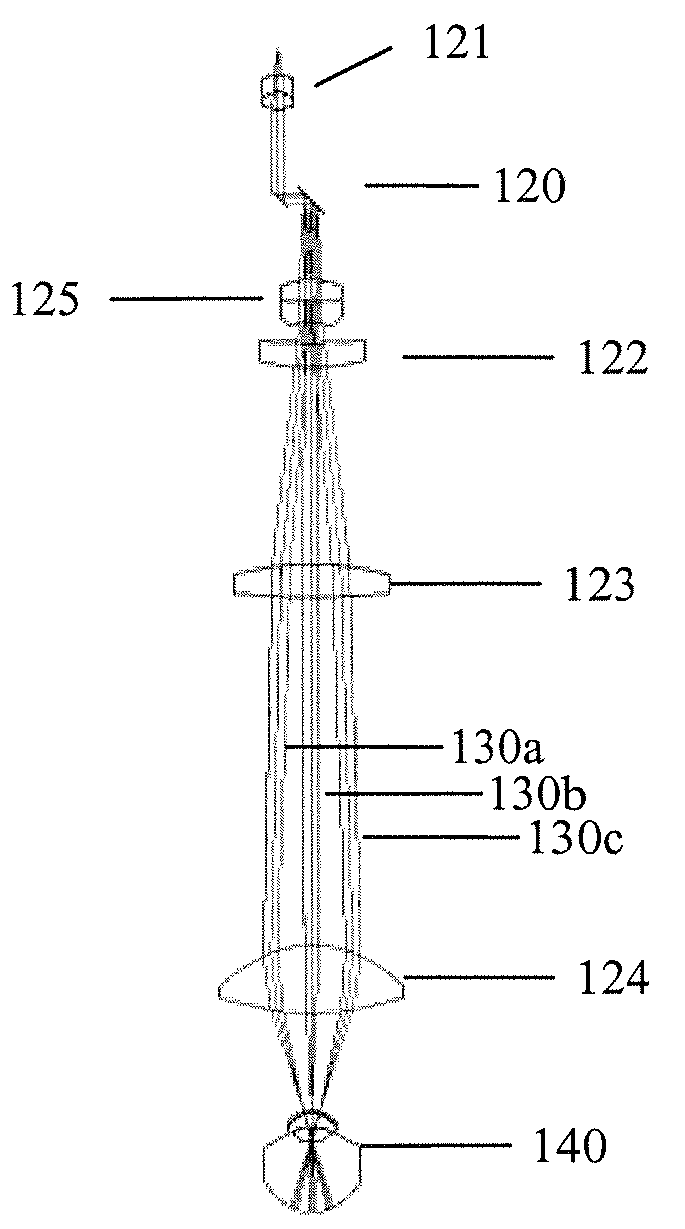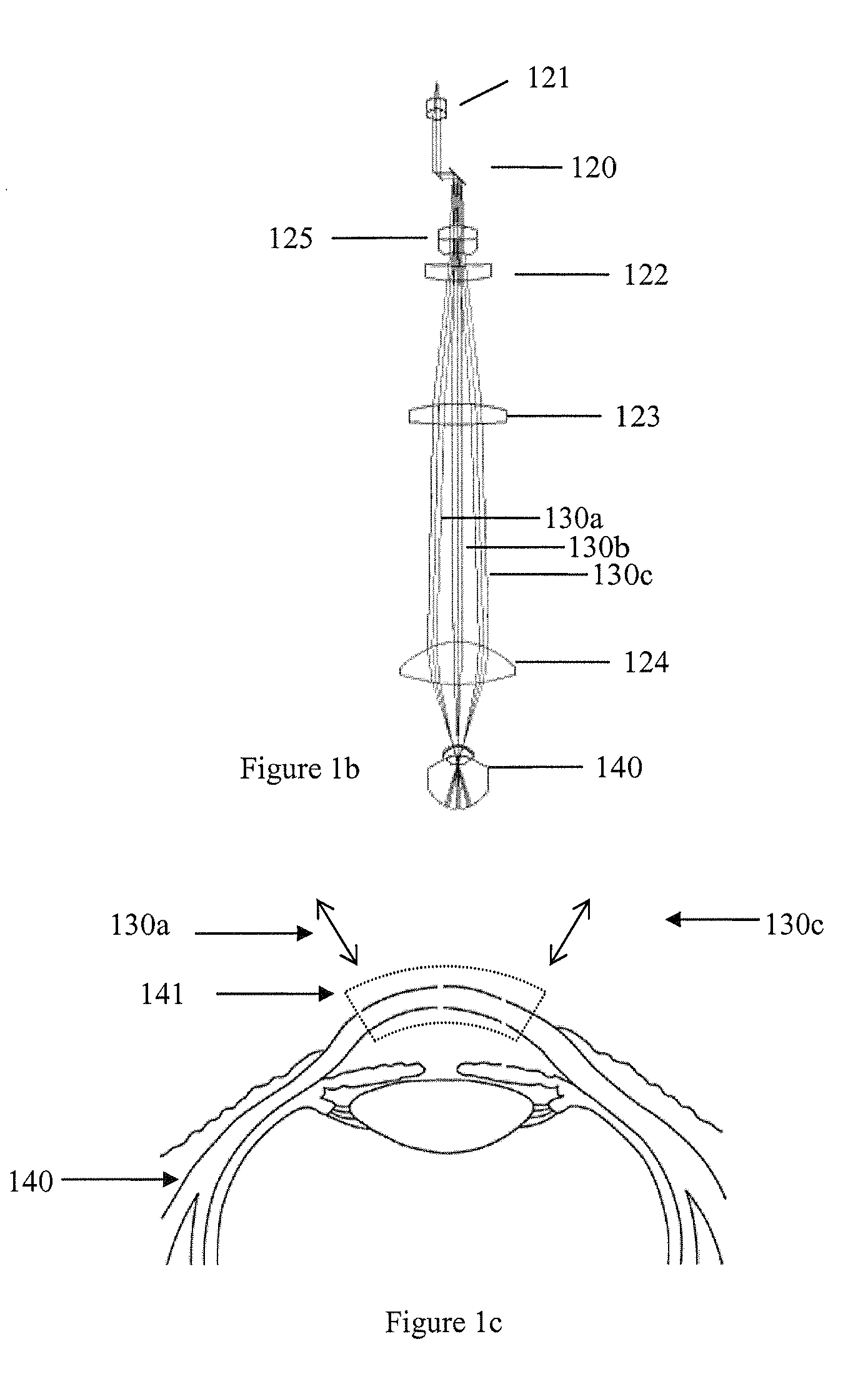Refractive prescription using optical coherence tomography
a tomography and optical coherence technology, applied in the field of human eye refractive state determination using interferometric tomography imaging, can solve the problems of insufficient accuracy of tomographic images alone to determine the refractive power of these surfaces, and resolution is difficult to achieve with non-contact visible light imaging
- Summary
- Abstract
- Description
- Claims
- Application Information
AI Technical Summary
Problems solved by technology
Method used
Image
Examples
Embodiment Construction
[0019]We describe an optical coherence tomography (OCT) system configured to scan the eye so that the specular reflection of the scanned beam from the anterior corneal surface is collected as part of the OCT image. The specular reflection locates the profile of the anterior corneal surface, either through the centroid of the specular reflection, or through its phase in phase-sensitive OCT. A set of such profile measurements provides the surface topography of the anterior corneal surface to the degree of accuracy required for refractive prescription. The subject approach provides a more precise measurement compared to the axial resolution available with a conventional OCT system.
[0020]In one embodiment, the z-axis (depth axis) location at which the specular reflection has its peak intensity is determined as a function of transverse location. This z-axis location corresponds to the anterior surface of the cornea. It should be noted that typical prior art OCT systems measure diffusivel...
PUM
 Login to View More
Login to View More Abstract
Description
Claims
Application Information
 Login to View More
Login to View More - R&D
- Intellectual Property
- Life Sciences
- Materials
- Tech Scout
- Unparalleled Data Quality
- Higher Quality Content
- 60% Fewer Hallucinations
Browse by: Latest US Patents, China's latest patents, Technical Efficacy Thesaurus, Application Domain, Technology Topic, Popular Technical Reports.
© 2025 PatSnap. All rights reserved.Legal|Privacy policy|Modern Slavery Act Transparency Statement|Sitemap|About US| Contact US: help@patsnap.com



